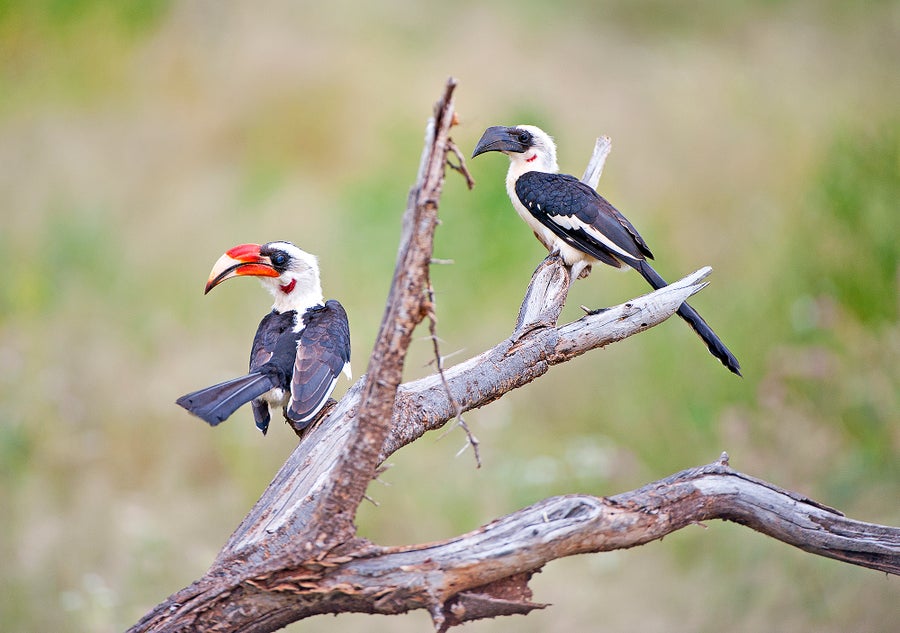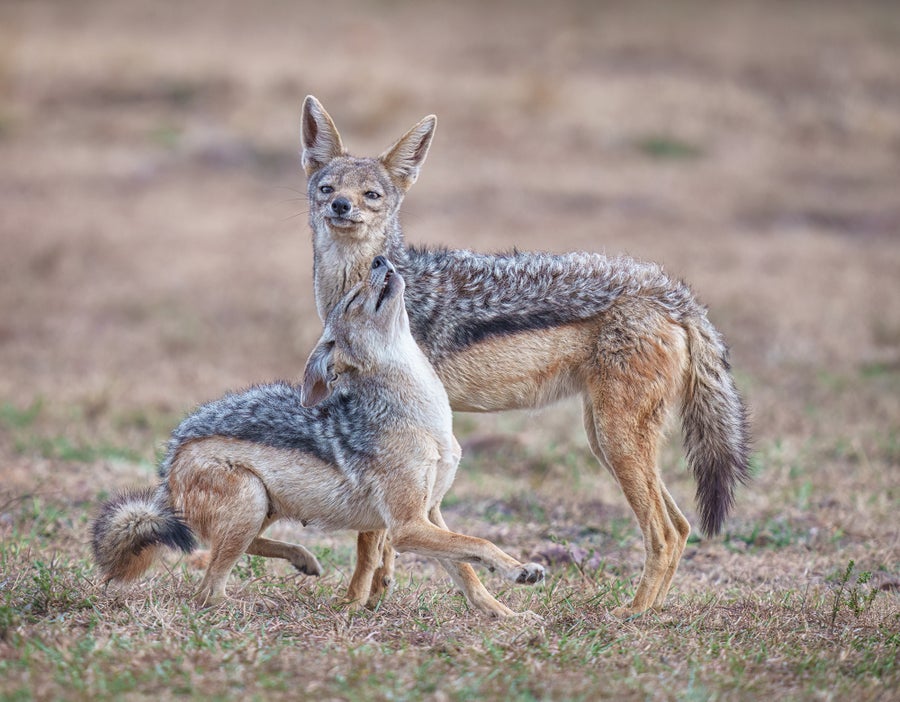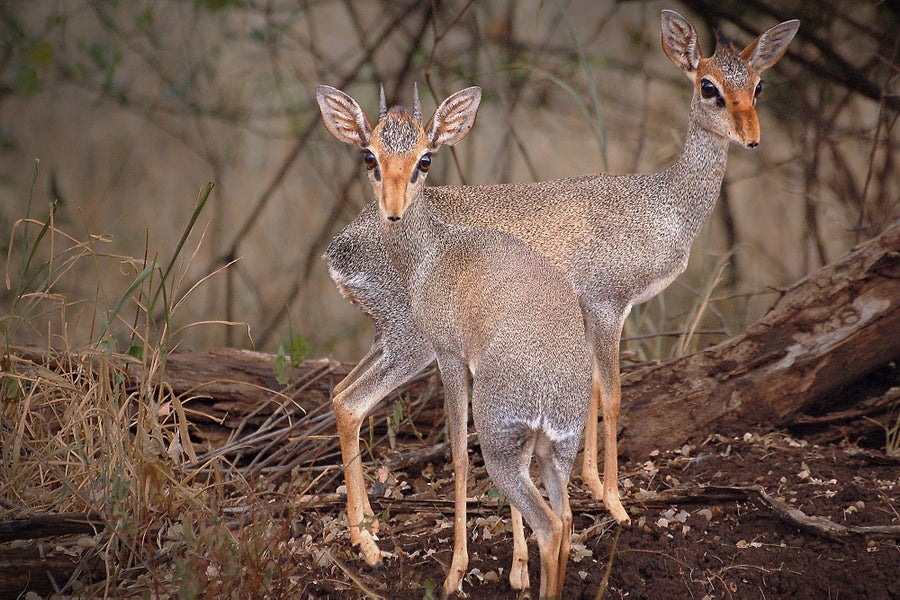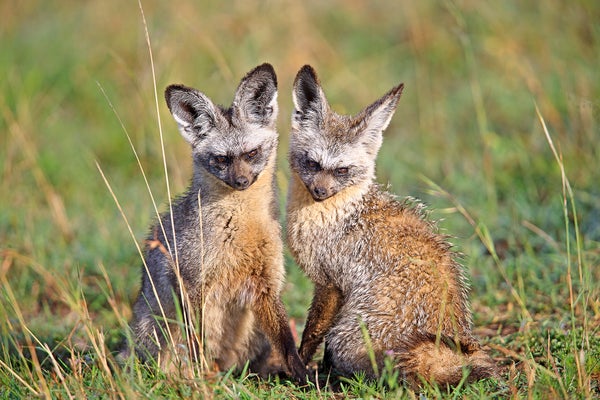The Lion King got one thing right: love is in the air on the savanna. From the birds perched in the trees to the foxes curled in their den, plenty of these grassland creatures are monogamous and mate for life, emulating characteristics of what humans might call love.
Some of these species are strictly monogamous and don’t breed outside of a pair—a relatively rare behavior that scientists call genetic monogamy. More common is social monogamy, in which mated pairs prefer each other’s company but might still partake in sexual relations with others. Even with these dalliances, socially monogamous pairs share deep, lasting connections, explains Karen Bales, who researches social bonding among animals at the University of California, Davis. Pair bonding isn’t “a social system or a mating system;” it’s a psychological connection, she says.
A committed, long-lasting partnership can help animals survive, explains Lisa Hiura, who studies developmental biology at the University of Colorado Boulder. In the savanna predators are plentiful, water is scarce and food can be hard to find. These species have evolved to thrive in these conditions—with a little help from their partner.
On supporting science journalism
If you're enjoying this article, consider supporting our award-winning journalism by subscribing. By purchasing a subscription you are helping to ensure the future of impactful stories about the discoveries and ideas shaping our world today.

Van der Decken Hornbills perch on a dead branch in Samburu National Reserve in Kenya. Credit: pilesasmiles/Getty Images
Von der Decken’s Hornbill
Birds are overwhelmingly monogamous creatures: 90 percent of species form monogamous bonds (compared with less than 10 percent of mammal species). Von der Decken’s Hornbills are a vibrant example; these birds are incredibly dedicated to their mate. “When breeding season approaches, it is almost like they are attached by rubber bands,” says Maggie Kinnaird, who has studied hornbill monogamy at the World Wide Fund for Nature. “If one flies off, the other follows.”
Even outside of breeding season, Von der Decken’s Hornbills remain loyal to their mate; only rarely does a male or female hornbill have extra-pair copulations. This makes them far more monogamous than humans, statistically speaking, Kinnaird says. “Hornbills stick with their mate,” she says. “They aren’t messing around under the canopy.”
When a female Von der Decken’s Hornbill lays her eggs, she seals herself inside a nest made of her own feces, sand and found objects such as twigs and brush. This is when the dedication of both parents truly shines. While the mother stays inside the nest feeding her chicks and lining the dwelling with her own feathers, the father is out foraging for his growing family.
This system is one reason why hornbills mate for life. The mother can protect the chicks from predation, knowing she and the young will still be adequately fed. “If you’ve got a good provider, why would you give him up?” Kinnaird says.

Mated Black-backed Jackals affectionately greet each other. Credit: Michael J. Cohen/Getty Images
Wild Canids of East Africa
The social systems of wild canids (doglike mammals) across the globe are built on monogamy, and the wild canids of the savanna are no exception. Jackals, bat-eared foxes and African wild dogs all mate for life and form a pair bond.
All three wild canids breed annually, spending 10 months a year either pregnant or rearing young. Having two caretakers share the burden of postpartum care increases canid fitness, allowing more pups to reach independence. And given the deep attachment that comes with pair bonding, wild canids stick together year after year.
In both bat-eared foxes and African wild dogs, it’s the father that spends the most time with the young, performing every caregiving behavior other than lactation. Such fatherly behaviors might have evolved thanks to female canids continually choosing males that care for their young, one study suggests.

Dik-diks (Madoqua guentheri) in a forest in Ethiopia. Credit: Jesús Gabán/Getty Images
Dik-Dik
These tiny antelope are socially monogamous and form deep attachments to their mate. In these pair-bonded animals, the loss of their partner can be as traumatic as it is for humans. Such a loss has been linked to anxiety and depressionlike behaviors and can cause physical sensations of pain, according to experiments with the prairie vole, another pair-bonded animal, Hiura says.
Dik-diks can often be spotted with their mated partner: one study found that dik-dik pairs spend roughly 64 percent of their time together. When the opportunity arises, however, the male dik-dik isn’t shy about engaging in extra-pair copulation.
For both humans and animals, these relationships are vital to our health and survival. Whether it is a romantic coupling, a platonic friendship or a bond with a family member, each of our relationships matters. “Relationships have a similar level of effect on our health as diet, exercise and even smoking,” Bales says. “It is important to have someone to care about and for someone to care about you.”
